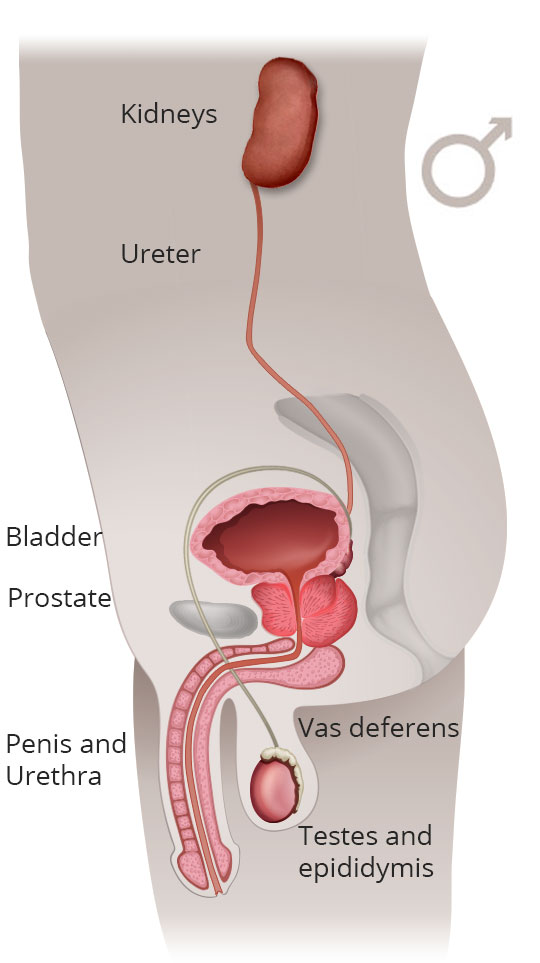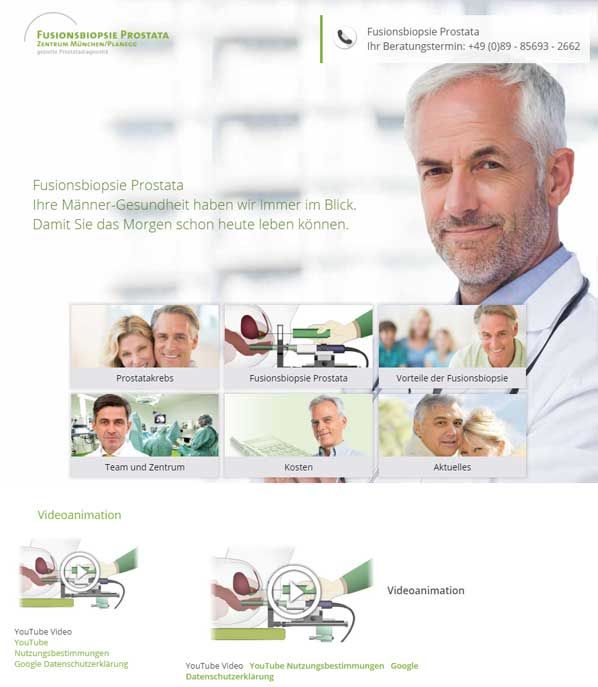Urological anatomy

Kidneys
The task of the kidneys is to clean the blood. The blood is first of all filtered; water is then removed from the resulting filtrate which increases its concentration in the kidneys. The water flows back into the blood, while the concentrated filtrate constitutes urine.
Renal pelvis and ureter
These organs represents the first point at which urine collects. It enters the renal pelvis via the renal calyces, from where it is transported into the bladder via the ureter.
Bladder
The bladder is the organ in which the urine collects and is stored. It consists of muscle tissue that is relaxed when in rest state and is characterised by its great elasticity. The capacity of the bladder depends above all on the size of the person. The capacity of a normal adult’s bladder is between 350 and 550 ml.
The urination process is a complex reflex action that can be consciously suppressed by a person of normal health. Part of this reflex is the simultaneous tensioning of the bladder muscles and relaxation of the sphincter muscle. A healthy bladder is able to empty itself fully without leaving behind any residual urine.
Urethra
The urethra is the tube through which urine exits the body. In women it is only about 3-4 cm long, and the sphincter muscle is located directly beneath the bladder. In contrast, the male urethra is around 25 cm long and includes a section that runs through the prostate, after which it passes through the sphincter before transitioning into the section that runs through the penis.
Prostate and seminal vesicles
The prostate is the man’s reproductive organ. It is located beneath the bladder and above the outer sphincter. In a healthy young man, it has a volume of less than 20 ml. The volume of the prostate grows with increasing age. The prostate is a gland that produces an acidic secretion that makes up about 20% of the volume of semen in an ejaculation. Once the man no longer desires to have children, the prostate is an organ that has no biological function.
The seminal vesicles lie behind the prostate and directly adjacent to it. They also produce a secretion that constitutes part of the seminal fluid.
Testes, epididymis and vas deferens
The testes are located outside the body in the scrotum. They have two tasks: to produce sperm and to produce the male sex hormone testosterone in the testicular tissue. This hormone has several physical functions, one of which is to create the man’s typical appearance (body hair, muscularity). It promotes the maturing of sperm and also has an influence on the man’s psyche (libido, drive, aggression).
The sperm cells enter the vas deferens through the epididymis which sits over and surrounds the testes. These lead into the urethra in the vicinity of the prostate, at the so-called seminal hillock and transport the sperm outside the body during ejaculation.
Penis
In the man’s penis, the urinary tract overlaps with the genital tract. It contains the final section of the urethra as well as serving as a reproductive organ.







